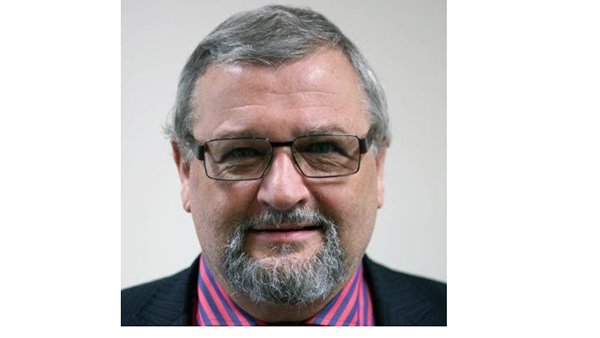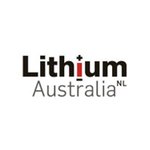Q&A with Adrian Griffin, MD Lithium Australia (ASX:LIT)
Hey! Looks like you have stumbled on the section of our website where we have archived articles from our old business model.
In 2019 the original founding team returned to run Next Investors, we changed our business model to only write about stocks we carefully research and are invested in for the long term.
The below articles were written under our previous business model. We have kept these articles online here for your reference.
Our new mission is to build a high performing ASX micro cap investment portfolio and share our research, analysis and investment strategy with our readers.
Click Here to View Latest Articles
As part of our coverage of global commodities markets and the mining sector in particular, Finfeed speaks with Lithium Australia MD Adrian Griffin to better understand the current, and future dynamics of the lithium market.
Lithium Australia is on track to become a significant lithium carbonate/hydroxide supplier in the coming years, in part due to strong exploration but also, on the back of avant-garde technology that has the potential to revolutionise lithium production.
Finfeed: Welcome to Finfeed Adrian, and thank you for taking the time to answer our questions...
Adrian Griffin (AD): Thanks for having me. It’s a pleasure.
FF: What inspired the recent rebrand from Cobre Montana to Lithium Australia and have there been other changes within the company aside from the name?
AG: We implemented the lithium strategy in 2014 and it soon became apparent that we were lost to the investing public because of poor branding. Cobre Montana (copper mountain) was not a name that naturally attracted lithium investors, and it tied the company too tightly to its past.
The change was far more than rebranding, it was a board and business development restructure; we brought in George Bauk, from the rare earths industry, as Chairman, and mining stalwart Barry Woodhouse, as CFO.
FF: LIT is currently working on several projects in Australia and Europe. Which one(s) do you think will be most lucrative for LIT?
AG: The business plan is not necessarily about being lucrative, although that always helps. It is more about being first. I strongly believe we have the right tools to get to production earlier than most, and capitalise on waste materials – the lithium micas that are presently discarded from other operations.
The hydrometallurgical process we have access to, along with access to waste materials containing lithium, combine to give us the lowest operating cost profile of anyone on the planet.
So, if you are first cab off the rank, and have the lowest operating cost profile, the lucrative opportunity is self-fulfilling.
FF: But where is the opportunity?
AG: Let me say this, we have a very strong focus on Europe at the moment, which of course includes the giant Cinovec deposit.
FF: Tesla recently signed an agreement with Canadian explorer, Pure Energy Minerals to offtake lithium hydroxide for its new Gigafactory in Nevada... do you think this deal sets a precedent for future offtakes between lithium miners and battery manufacturers? Do you think geographic proximity is an important factor for battery manufacturers when sourcing lithium for their factories?
AG: I certainly hope the Tesla arrangements don’t set a precedent, as they are structured as a call option rather than an offtake agreement. The agreements are pretty thin and very conditional.
Geographic factors are important to the extent of the political drivers that currently shape the industry. Chile has production restrictions, and China has trade restrictions. There are structural failures in the supply chain as a consequence. So to that extent, geography is important. But taking a commodity viewpoint, the demand is there, and there is sufficient value in the product to ship it several times around the globe before there is a detrimental impact on profit so the distance between supplier and end-user, is not all that important.
FF: When it comes to battery manufacturers using high grade lithium in their batteries, there is still a lot of uncertainty as to exactly what specifications they are after. As a simple example, it’s still unclear whether it will be lithium carbonate or lithium hydroxide, that becomes the industry standard for lithium-ion batteries – what’s your take?
AG: My take is it is all about price, it is not really about whether it is carbonate or hydroxide. Most of it gets reprocessed to other exotic lithium compounds in any case, but if you are a battery producer that has to go through hydroxide and an intermediate to produce the chemical you want in your battery, hydroxide will be more attractive than carbonate, if the price is right.
The price disparity between the two appears to originate from the operating cost to convert carbonate (the most common primary lithium chemical) to hydroxide, and the lithium losses in doing so. The paradigm shift will be processing technology that gives you the conversion at low-cost, and high recoveries – and, yes, we are working on that.
FF: Lithium is only one of a handful of commodities that have remained well supported amidst the ongoing commodities downturn. What do you think is the reason for this?
AG: An answer in two words ‘Elon Musk’. He is a grand master; a strategist who has hooked the world on lithium technology, not only for the world’s highest performance automobiles, but for domestic power supply. He has sold the dream and the public is hooked.
But if you analyse it from a technical viewpoint, lithium supplies one of the cleanest power solutions available, and at the right price. The technical side of the argument is compelling and the financial and environmental saving enormous, and the public sees that, and it converts to growing demand. That demand is being created in a commodity with supply constrains which is what gives it such strong support
FF: Are lithium-ion batteries the strongest catalyst for higher lithium demand over the next decade?
AG: There is no doubt. Most analysts pin it to the rapid expansion of the EV market, but the story is much bigger than that. We are on the verge of a complete global overhaul of grid based power, where the consumer becomes the power trader. The possibilities are limitless.

Lithium Australia Managing Director, Adrian Griffin
FF: LIT has updated the market on several occasions regarding its patented ‘L-Max’ process. What’s ‘L-Max’ all about? And what does it mean for LIT?
AG: L-Max is a zero energy footprint process for recovering lithium from micas. Ironically micas are the most abundant lithium mineral but are discarded largely due to the high energy cost associated with more conventional processing techniques. If you can remove the energy from the equation, all of a sudden things that have been perceived to be waste in the past, become ore. Not only is it about low-cost, but also about by-product credits and spreading risk. L-Max does all of that for you. It creates a situation where you have the advantages of:
- Available waste materials to process (no mining cost)
- Low energy consumption giving low operating costs
- Very significant by-product credits in the form of potassium, silicon and aluminium chemicals, and
- Expanding market with projected supply gaps
FF: If the ‘L-Max’ process is as efficient and productive as initial tests suggest, do you see established lithium producers such as Orocobre and SQM adopting the ‘L-Max’ process as part of a broader shift within the industry towards cheaper/cleaner production methods?
AG: L-Max is only applicable to the recovery of lithium from micas, so it is project specific, and not applicable to all lithium recovery operations. Orocobre recovers lithium from brines (salt water) which is a completely different kettle of fish. L-Max opens up the opportunity to take a fresh view of lithium occurrences not previously considered to be orebodies, so rather than adding to what is currently available, it creates the opportunity for parallel supply from previously unrecognised sources.
FF: If so, can the L-Max process be patented and licensed?
AG: The L-Max process is protected by patent. Lithium Australia has an exclusive licence for all of Western Australia, an exclusive licence for Cinovec and one other licence that is currently not allocated to any specific property, but we are in discussions with various parties that may result in the licence finding a home in the near future.
FF: Given the variety of uncertainties that still remain with regards to lithium specifications and demand, what steps is LIT taking to ensure its final product will be in line with what end-users expect?
AG: The L-Max process is very flexible, and forgiving. We achieved ‘battery grade’ on the first attempt of running the process on a continuous basis. We have samples from that run being tested by end-users and will increase product spec if required by the market.
FF: As you’ve mentioned, LIT is working on several fronts including its own exploration, JV agreements and a technology angle in alliance with Lepidico. What most analysts and investors would like to know is which of these avenues do you think will generate LIT’s first revenues?
AG: The revenue will come from lithium production from micas i.e. the practical application of the L-Max process. To get there we will need to up-scale the current continuous plant operations, and then commit to the construction of a demonstration plant. The latter is already on the drawing board and we hope to commit to construction by the end of 2016. This will require the completion of feasibility on one of our projects and the most likely location is Europe.
General Information Only
S3 Consortium Pty Ltd (S3, ‘we’, ‘us’, ‘our’) (CAR No. 433913) is a corporate authorised representative of LeMessurier Securities Pty Ltd (AFSL No. 296877). The information contained in this article is general information and is for informational purposes only. Any advice is general advice only. Any advice contained in this article does not constitute personal advice and S3 has not taken into consideration your personal objectives, financial situation or needs. Please seek your own independent professional advice before making any financial investment decision. Those persons acting upon information contained in this article do so entirely at their own risk.
Conflicts of Interest Notice
S3 and its associated entities may hold investments in companies featured in its articles, including through being paid in the securities of the companies we provide commentary on. We disclose the securities held in relation to a particular company that we provide commentary on. Refer to our Disclosure Policy for information on our self-imposed trading blackouts, hold conditions and de-risking (sell conditions) which seek to mitigate against any potential conflicts of interest.
Publication Notice and Disclaimer
The information contained in this article is current as at the publication date. At the time of publishing, the information contained in this article is based on sources which are available in the public domain that we consider to be reliable, and our own analysis of those sources. The views of the author may not reflect the views of the AFSL holder. Any decision by you to purchase securities in the companies featured in this article should be done so after you have sought your own independent professional advice regarding this information and made your own inquiries as to the validity of any information in this article.
Any forward-looking statements contained in this article are not guarantees or predictions of future performance, and involve known and unknown risks, uncertainties and other factors, many of which are beyond our control, and which may cause actual results or performance of companies featured to differ materially from those expressed in the statements contained in this article. S3 cannot and does not give any assurance that the results or performance expressed or implied by any forward-looking statements contained in this article will actually occur and readers are cautioned not to put undue reliance on forward-looking statements.
This article may include references to our past investing performance. Past performance is not a reliable indicator of our future investing performance.






